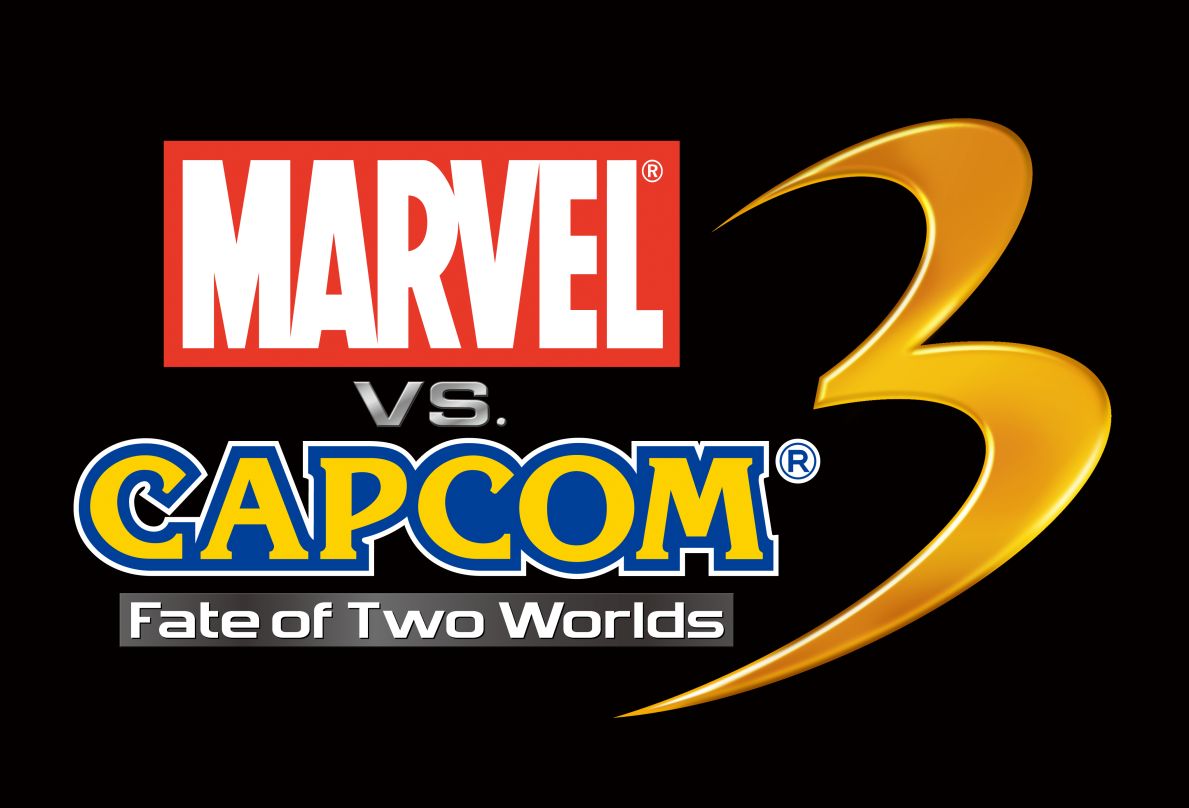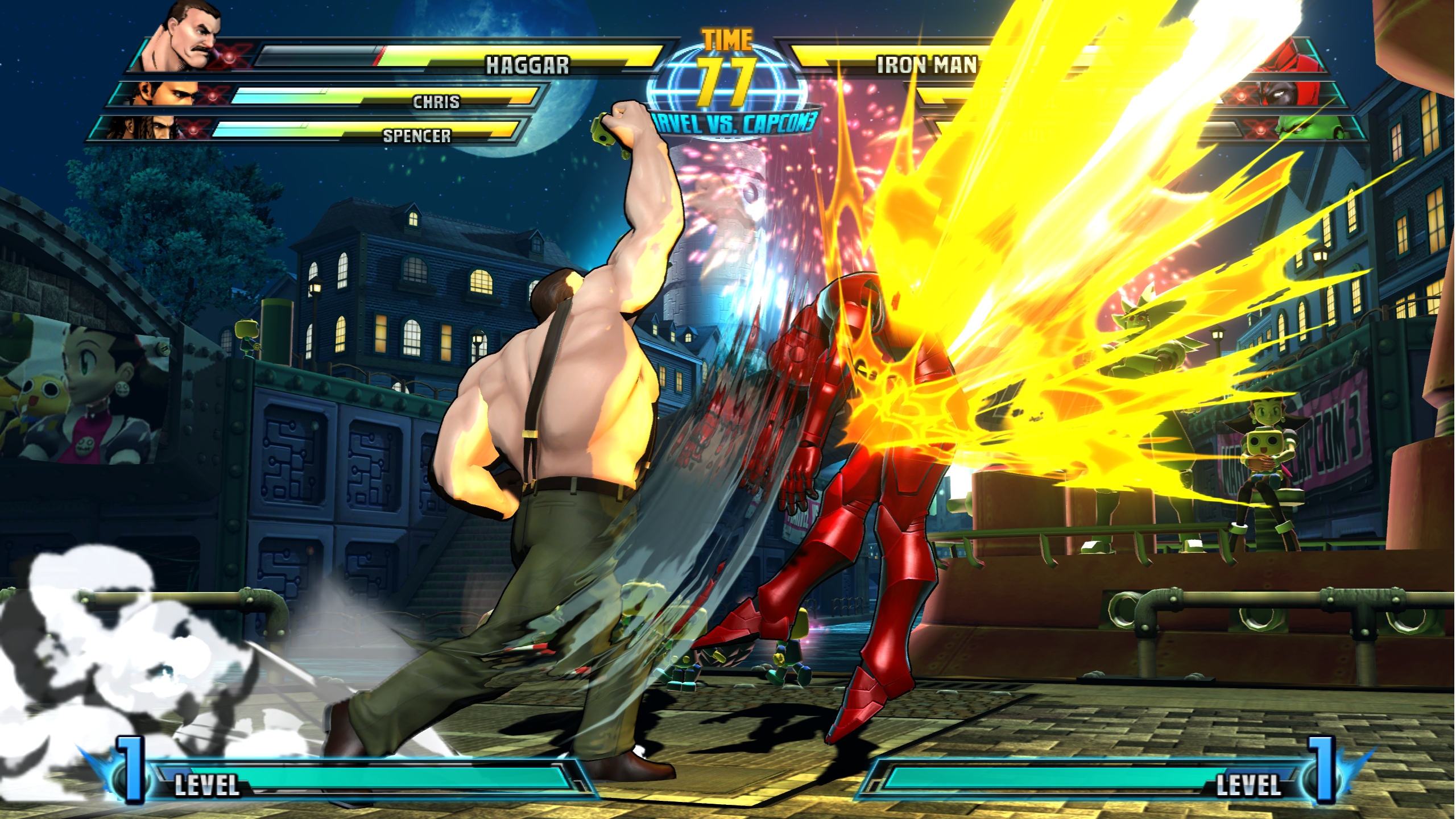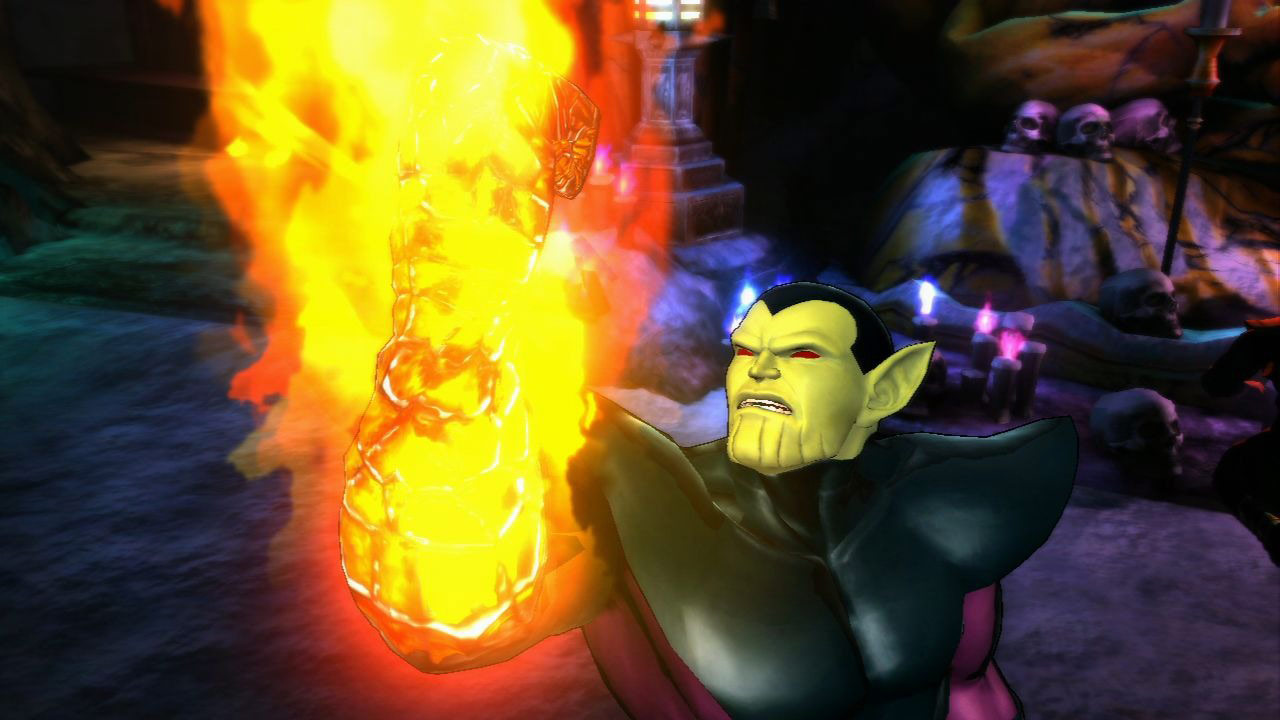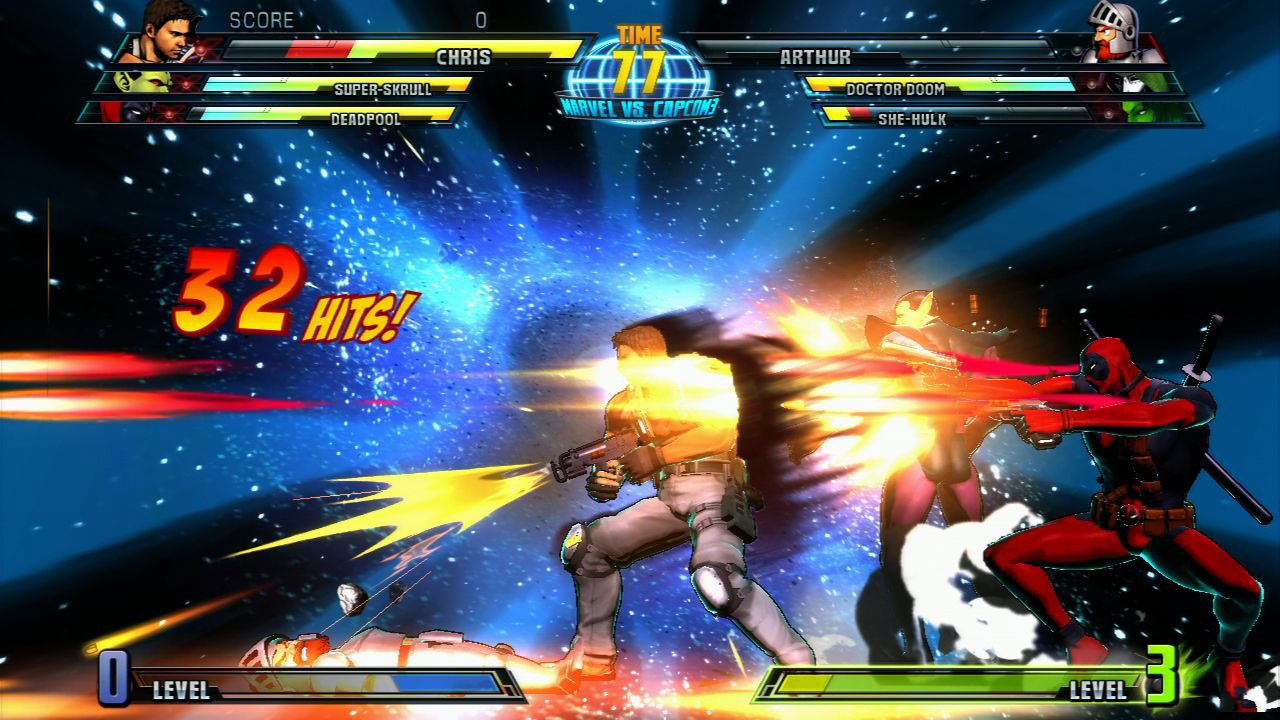
For eleven long years, fighting game fans have clamored for a sequel to one of the craziest fighting games of all time, Marvel vs Capcom 2. Petitions were written, message boards were flooded with requests, rosters were pondered and predicted. The wait has been a long and painful one, our appetites whetted a bit by last year’s Tatsunoko vs Capcom, but not fully satiated due to unfamiliarity with some of the characters and a revert back to 2-on-2 instead of 3-on-3.
Marvel vs Capcom 3: Fate of Two Worlds is now upon us, but was the 11-year wait worth it? Did the 10-month hype train guide us to the promised land? Simply put: Is the game any good? The answer to all three questions is simple: Yes. The fast, frenetic combat that MvC2 fans know and love is back and better than ever, and as a whole Marvel vs Capcom 3 does everything it’s supposed to do and more.

First and foremost, the most critiqued part of the game is the roster, with fans saying things like "Marvel vs Capcom 2 had 56 characters, so 3 should have more!" and "Where’s *insert left out Marvel/Capcom character here*?!" Yes, there are some omissions that are glaring (Frank West being cut late in development is one of my peeves), and yes, it’s 20 short of MvC2, but MvC2 was, in Capcom project manager Seth Killian’s words, "garbage-picking 15 years worth of sprites." Essentially, that means the sprites you saw for, say, Morrigan, were taken from the original Darkstalkers, which came out in 1994. Only 10 characters from MvC2 (Cable, Ruby Heart, Amingo, SonSon, Hayato, Jill, Marrow, Tron, Servbot and the final boss Abyss) were specifically made for the game; the rest were cut and pasted.
In Marvel vs Capcom 3, all 36 (soon to be 38 with DLC) are fully-rendered, fully-developed 3D characters. Each one was built specifically for MvC3, and the detail that went into each character is extraordinary. MODOK presses a different button on his console for every attack he does, for example. This leads to two things: one, the characters take more time to produce; and two, the characters take up more data space on disc due to their complexity. Not only that, these 36 characters are much more balanced than MvC2‘s 56 characters could even dream of being. Let’s not forget about DLC being able to add more in the future.
Speaking of those visuals, the comic-book style graphical scheme that Capcom chose is excellent. It really looks like a living comic. Especially cool is when you’re about to fight the final boss, he "rips" the screen to shreds before taunting you. Each of the character models is clean and detailed, as evidenced by Model Viewer, a place where you can look at everyone’s model in a 360 view. The audio portion is just as impressive, with the voice acting being some of the best in fighting game history. For every line that gets annoying, there are about ten that are funny every time. One of my favorites is when Spencer and Iron Man are starting the match and Tony Stark non-chalantly says, "Just the arm? Why? Can’t afford the rest of the suit?" The individual themes are UNREAL, some creating the perfect background music for an epic battle (Zero is a prime example). Even the menu and character selection music will get you grooving in your chair, especially the three "Take You For A Ride" remixes that you’ll hear when selecting a team in Training Mode.
The characters that were chosen are a balanced bunch, as I have yet to find a character that I couldn’t see myself learning in the future. Old Capcom favorites like Street Fighter’s Ryu and Chun-Li and Darkstalkers’ Morrigan and Felicia are joined by a healthy group of characters that have never been in a fighting game before, like Dante and Trish from Devil May Cry, Okami‘s Amaterasu, and Arthur from Ghosts ‘N Goblins. Marvel is the same way, as Wolverine, Hulk, Iron Man, and more Marvel mainstays are joined by newcomers like Thor, Phoenix, and Dormammu. Each character is fully and accurately represented, from attire to fighting moves to voices and speech.

Whatever you think about it, the roster doesn’t mean anything without the ability to actually play, and the gameplay here is a fighter’s dream. 3-on-3 fighting is back with a vengeance, a welcome returning feature for sure. The control scheme is different, foregoing the previous two-light/two-heavy/two-partner configuration with a light/medium/heavy/special/two-partner layout. The three main attack buttons (light/medium/heavy) are pretty standard fare, but the new Special button is important, as it is your ticket to air combos: pressing S and connecting will launch your opponent into the air, where you can follow them and bring the pain. While in the air, pressing S and a direction (up, down, left, or right) will call in one of your partners to continue the aerial assault, but should your opponent guess which direction you press, the combo will end. Hyper combos are still here, and they’re as flashy and ridiculous as ever. Cornering Sentinel and pulling off a 103-hit Dormammu/Akuma/Arthur Team Hyper Combo is a beautiful, beautiful thing. It’s what Marvel vs Capcom is all about.
A major addition to the gameplay is called X-Factor, which is activated by pressing all four attack buttons. Basically, X-Factor is a one-time only boost to your entire team: everyone gets beefed-up attack power and speed, and the character currently in the battle will recover all of the "red health" he or she has accrued. However, certain conditions will affect X-Factor’s usefulness: if you activate it when you have all three of your character still available, you’ll get a "Level 1" X-Factor that goes by quickly and gives a decent boost. If you’re down to your last fighter, "Level 3" X-Factor will not only last longer, but the power-ups are serious business. A Level 3 X-Factored character leveling an entire opposing team is not out of the realm of possibility. Deciding when to use X-Factor may very well be one of the most crucial decisions a player can make, as it can turn the tide of a match as quickly as it is activated.
Training Mode enters the spotlight as one of the most robust, detailed modes in the game. You can set up any scenario you wish, from increased damage to 3-on-1, and more. You can even simulate a bad network connection, helping the player deal with inevitable lag online. The training mode also serves as a laboratory of sorts for over-the-top combo creation, but here’s the beautiful thing: not a single multi-character combo that I’ve attempted has failed. I’m amazed at the things the game lets players pull off just by messing around in the training.
When you’re not simulating network connections in training, the actual online play is the same as other Capcom fighting games: choose between ranked or player matches, create or find a lobby, then have at it. Also like previous Capcom fighters, it is bloody hard to connect to a ranked match, but I had no problem getting to a player match lobby. The only way I was able to fight in a ranked match was to allow Fight Requesting while I played Story Mode, which is an issue. While Player Matches are fun, they don’t allow you to level up, so they’re mainly for practice. A 45-4 record on player matches, sadly, means less than a 1-1 record in Ranked Matches.

This game is quite honestly tailored to the hardcore fighting crowd, like those who travel to Vegas every year to play in EVO, the biggest fighting game tournament in America. However, MvC3 has a solution for those who don’t know what "OTG" means or how many frames each move has, and that’s called Simple Mode. Here, instead of needing complex command inputs, players can use just directions and button presses to play the game and hold their own. However, Simple Mode is not without its downside: players who use it will lose a lot of their characters’ available moves. For example, Dante has over 40 different special moves and 3 hyper combos, but with simple mode you only get access to 4 and 1, respectively. Simple mode is great for those who are just beginning, but also limited enough that it will encourage players to move up to normal when they feel comfortable with the pace of the fighting.
As highly as I speak of the game, there are some omissions and issues that leave me scratching my head. When the game was first announced, the people behind the game bragged of a great story, filled with twists and turns and written by Marvel vet Frank Tieri. There is no Story Mode in Marvel vs Capcom 3, merely an Arcade mode. Of course, each character has their own specific ending, and maybe that’s what Tieri helped in writing, but the expectations of a grand story mode were not met. As a whole, variety in the different game modes is rather absent. Offline Mode has Arcade, Versus, Training, and a new Mission Mode akin to Street Fighter IV‘s Trials. Online has the ranked/player matches spoken of above, and that’s basically it. Capcom has announced at least one DLC mode available soon, but that doesn’t help now.
Aside from the lack of Story Mode, a major perk of Super Street Fighter IV‘s online experience was the ability to watch others fight it out live through Spectator Mode. MvC3 does not include this feature, instead showing the life bars of the characters in battle on the side of the lobby screen to give players an idea of who’s ahead. I do like that they’re keeping us informed, but the lack of Spectator Mode is a disappointment. Spectator was a terrific way of sizing up a potential opponent before facing him or her, and now that it’s gone, I find myself really missing it. Besides, who doesn’t want to watch awesome matches while waiting to play?
In the grand scheme of what MvC3 is, the missing modes and features are small setbacks. Marvel vs Capcom 3 is the same crazy, over-the-top fighting game that fans loved back in 2000, just with a fresh control scheme and a new coat of 3D, hi-res paint. Fighting game fans will fall in love immediately with the "easy to play, hard to master" format of the game, and fresh faces will be able to build themselves up from step one on to the online experience. It’s good to see the franchise make a comeback in such a fun, insane way. Anyone who loves fighting games would be daft to miss this.


















